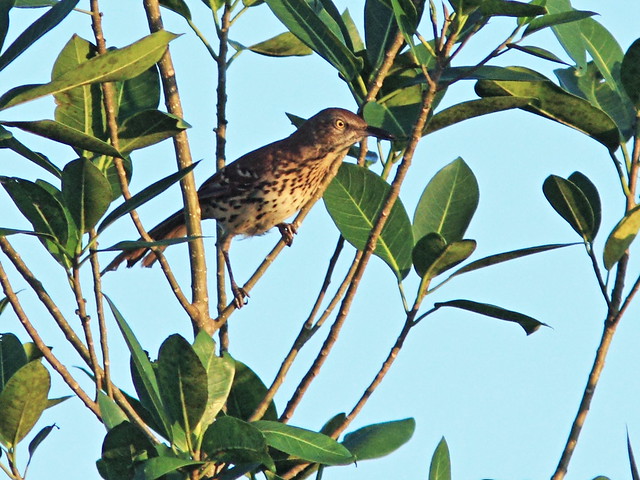
In a nearby Trema tree, an immature male Northern Cardinal moved close to the other thrasher.

The immature cardinal still has a mostly dark bill which will become bright red by spring.
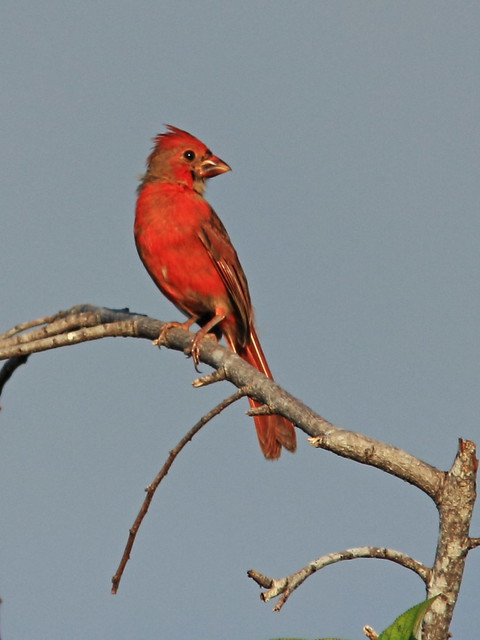
Water levels are elevated, causing long-legged waders to disperse. There was no wind, and the lake's surface mirrored a lone Great Egret. A Little Blue Heron was resting on an adjacent rock.
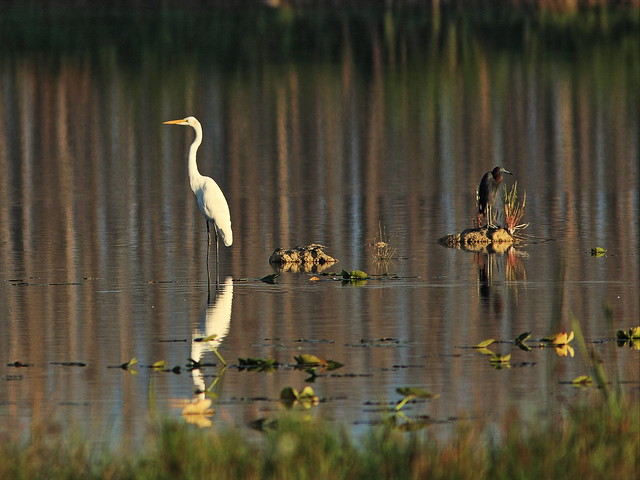
As usual, the egret did not tolerate my presence, leaving the heron to stand its ground and protest.

A Loggerhead Shrike occupied a high perch and kept a wary eye on me.
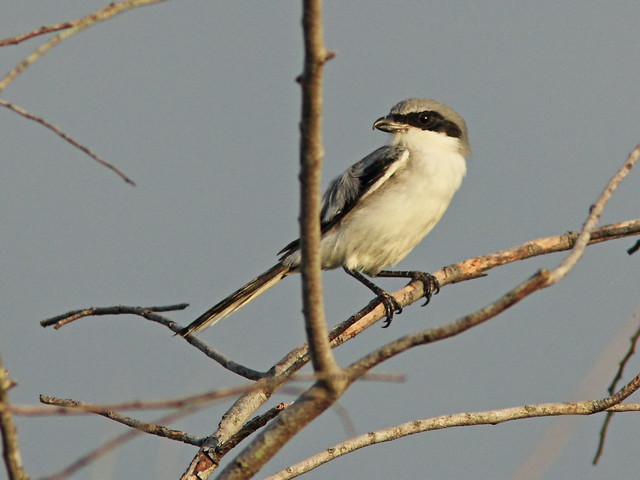
I found a shady spot on the levee of the canal and watched quietly. When there are warblers around I sometimes resent the distraction of Blue-gray Gnatcatchers, but for a while a flock of a half dozen provided my only entertainment.


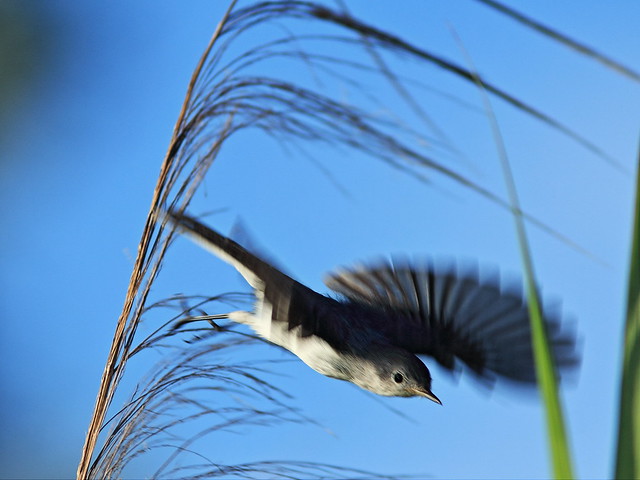
A Prairie Warbler with at least two more companions suddenly appeared.

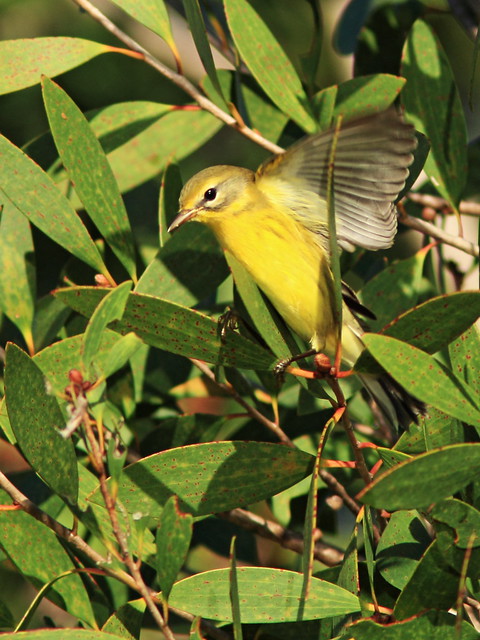
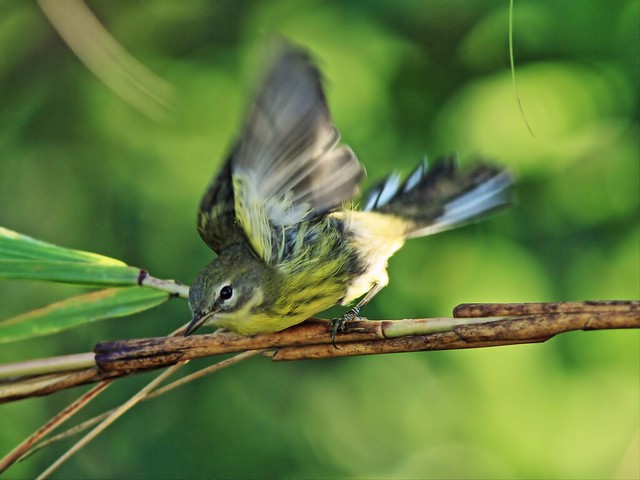
I heard the cat-like mew of a Red-eyed Vireo, and soon two emerged from a nearby bush.

A pair of Carolina Wrens sang a duet nearby-- the male provided loud whistling notes and the female finished the song with a flat chatter. I briefly caught sight of the female.
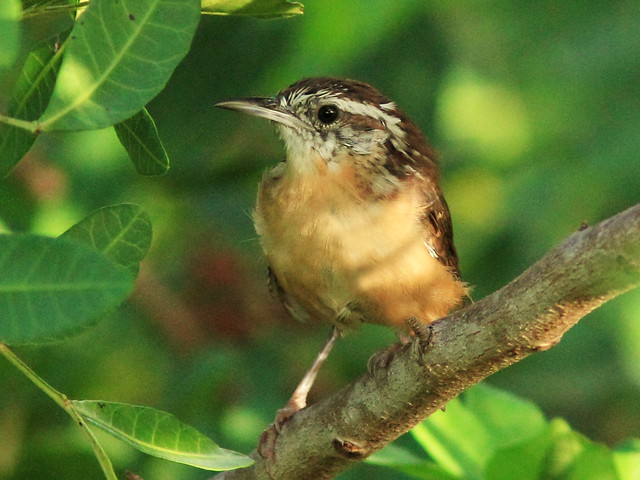
Between the brief avian encounters, I turned my attention to some interesting insects. Dragonflies included a Needham's Skimmer...

...a Regal Darner...
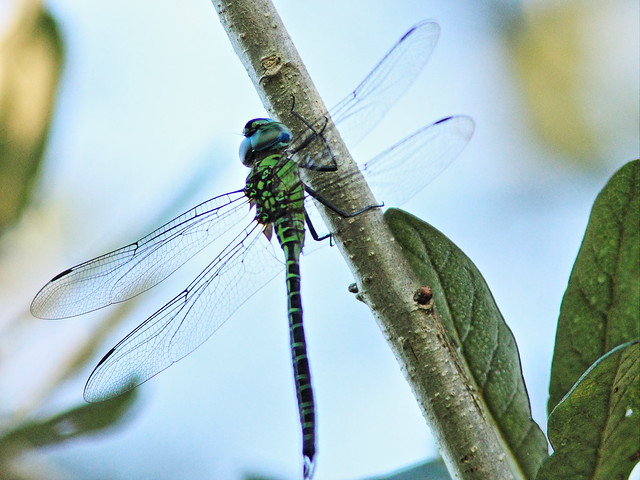
...an Eastern Pondhawk...

...a Halloween Pennant...
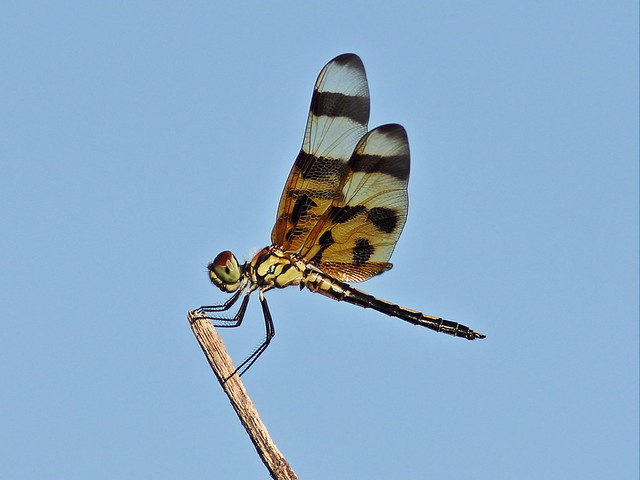
...and a Band-winged Dragonlet:
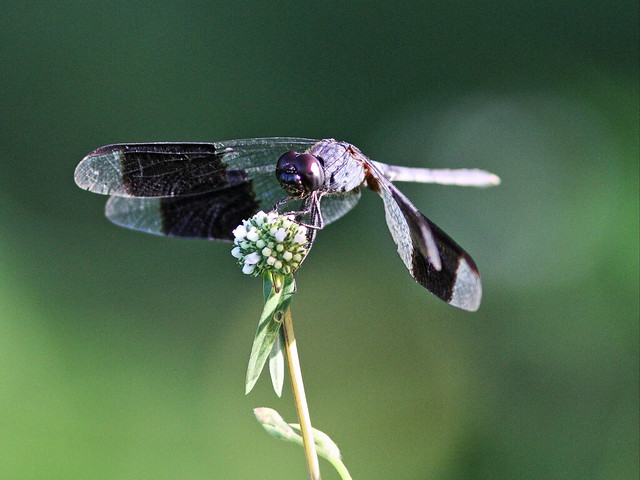
Butterflies abounded. Here is a perfect specimen of a White Peacock:

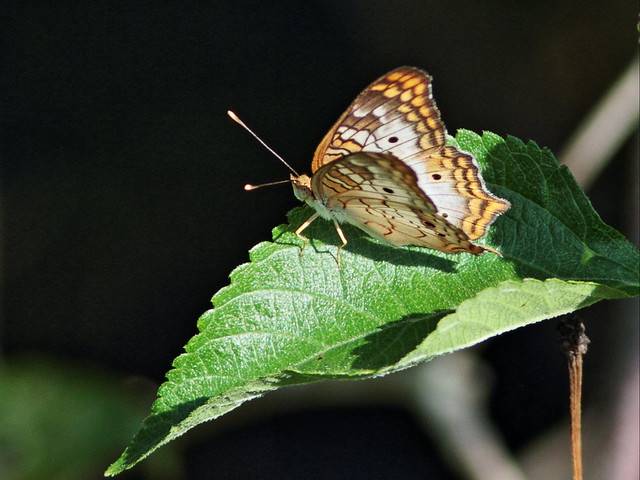
This is a tiny Clouded Skipper:
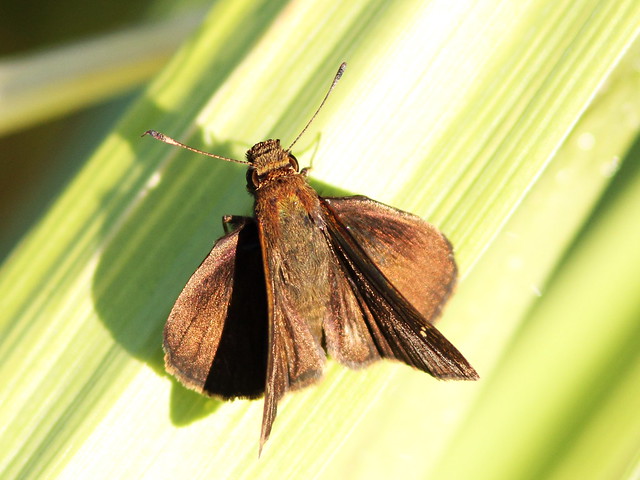
A male Julia heliconian with closed wings looks nondescript from below...
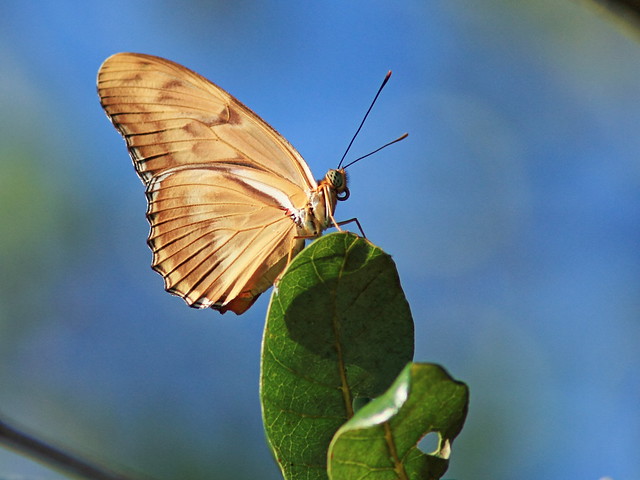
...but blazes with color when it opens its wings.
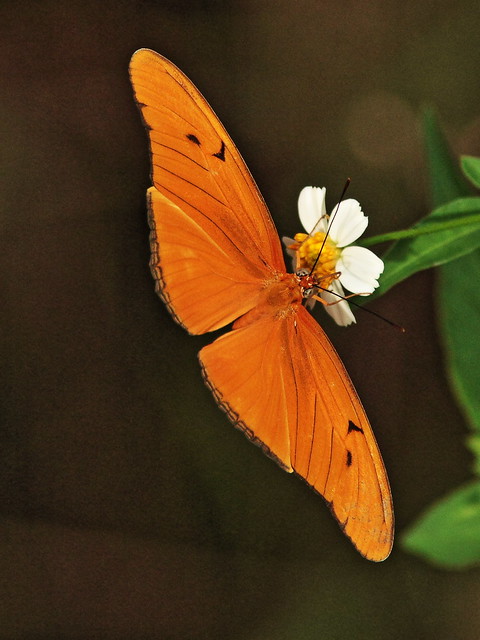
The female Julia is less conspicuous:

The previous day one of our local Bald Eagles had been seen working on the nest, a full month earlier than this has been observed over the past eight breeding seasons during which we have monitored their behavior. While driving past the nest site I was surprised to see both adults roosting just west of the nest tree.
The female is noticeably larger than the male:
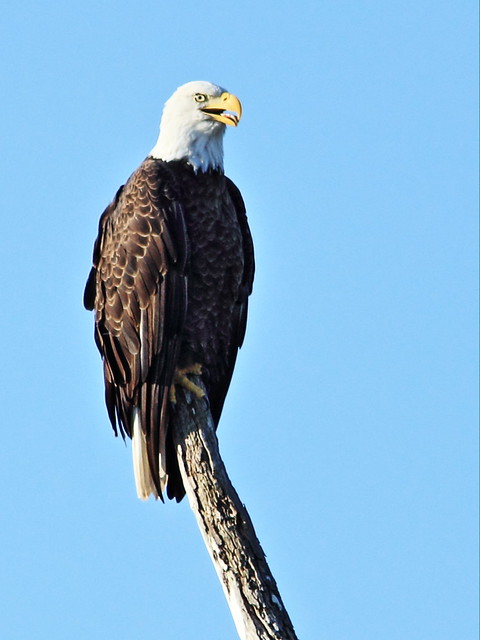
This is the male:
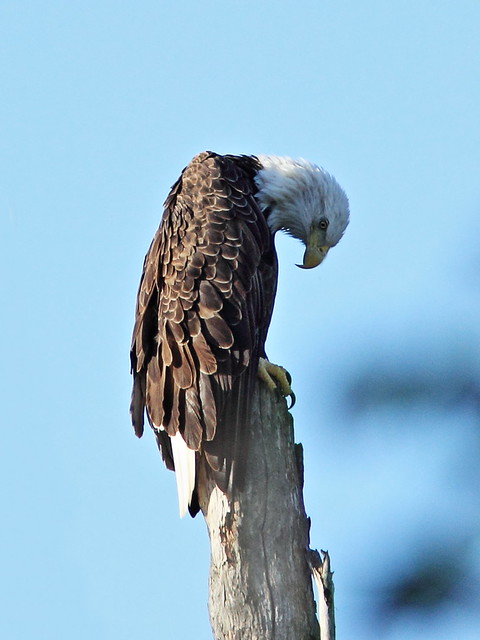
After a few minutes the female flew along the road to a tree just to the east of the nest.
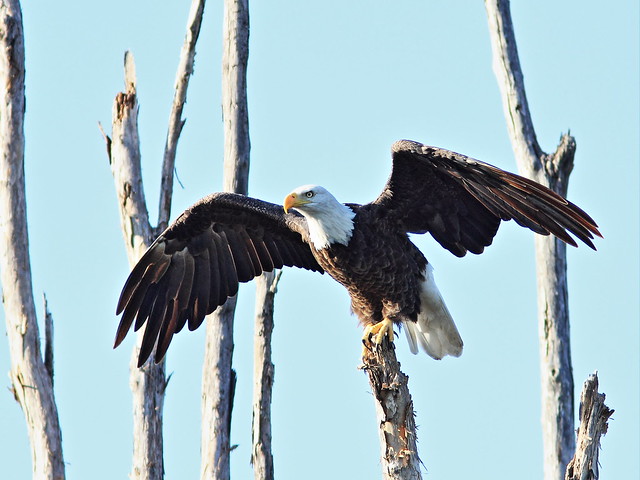

The male followed her.

For more information, photos and reports visit my Bald Eagle Nest FORUM.
just beautiful shots, all the way through!
ReplyDeleteIt may seem slow to you Ken but from over here that looks a super birding trip.
ReplyDeleteI like the subtle but neat blues and greys of the gnatcatcher and the way you captured the vireo like you did. We don't have anything like the vireo family here and it's always good to see any of them. You have some great insect pictures too - lots of colours, especially so the Julia heliconian. You've left me puzzling over the breeding season for Bald Eagles in Florida and I'm guessing it must start at the end of the year?
@Phil-- The Bald Eagles in south Florida lay their eggs in December and fledge in late March or early April. This is about 3 months earlier than those in the northernmost US. The juveniles and immature birds migrate NORTH by late summer to forage in cooler water (as the fish retreat to deeper cooler water during the summer) , returning in early winter while the northern eagles migrate SOUTH in late fall to find open water. They follow the open water back north in the spring.
ReplyDeleteWow! What beautiful photos of nature and all her beauties ~ Love the eagles!
ReplyDeleteartmusedog and carol (A Creative Harbor)
I can't even pick a favorite photo. Each time I thought I found one, I see another. They're all great.
ReplyDeleteA marvelous series of winged things, super photos of all of them. It is hard to pick a favorite.
ReplyDeleteAll of your shots are amazing! Loved the blue-grey gnatcatcher and the prairie warbler...but loved them all! The dragonflies are amazing! And the bald eagles! Wonderful shots!
ReplyDeleteI found it interesting that you commented on my post that saguaros were declining in the Tucson area. I had to look it up online, thinking I might have missed something. I found where there was a significant decline between 1940 and 1971 on the east side, but no real info about a current decline. Since they are protected, people cannot indiscriminately cut them down for development projects and often new ones are planted in people's yards (like mine) but there may be a decline I am not aware of. You made me do some research this morning! :-) Not a bad way to start a day....I always enjoy learning new things!
@Marie-- I had temporary duty in Arizona with the Indian Health Service in the late 1960s, when I became aware of the diseased cactus. At that time there were many tall and branching ones. Last year between Phoenix and Tucson I saw relatively few really big ones and I'm afraid I assumed that there was still a problem. I guess what I was seeing was the recovery and establishment of many new and younger cacti. Thanks for the reference as it is heartening, and now you have improved my fund of knowledge!
ReplyDeleteYou got some great shots for a slow day!
ReplyDeleteA slow day for you, would be great day for me! Nice set of winged pictures.
ReplyDeleteCheers - Stewart M - Melbourne
Fabulous photos! The eagles are handsome birds.
ReplyDeleteA wonderful series of photos and animals.
ReplyDelete...and this is a slow time for birding? I'd like to see your post when it's much more active. My goodness. What a great array. I think my favorites this week are the warblers with their wings readied for flight.
ReplyDeletethanks for sharing your link this weekend at I'd Rather B Birdin'! Much appreciated.
Wow your post is filled with so many wonderful birds and such a wide variety. I really enjoyed them all but I must say the Eagle spotting would have been the biggest thrill for me.
ReplyDeleteWhat a great collection of images! I especially like the shrike and vireo photos. And the Prairie Warbler is gorgeous. We get them rarely in Minnesota but I'm hoping to see one some day!
ReplyDeleteThank you so much for writing me back about the saguaro decline. We had an interesting exchange and I learned a few things! I have a post coming up in a couple to three weeks that shows some of the gorgeous saguaros we saw as we came home from the north after out trip. But not on 10. We were on 77, coming from Oracle. It's just a guess on my part, but I would think vehicle emissions would hurt the growth of the saguaros now. But there are still many, many gorgeous HUGE plants to see. I should post about them more often. I forget how unusual they are to most of the world out there. :-)
ReplyDeleteSome fantastic shots. Love the Shrike.
ReplyDeleteWow! You got some awesome shots! I love the egret shot a lot.
ReplyDeleteLoved every single shot of these beautiful captures. Would probably take me all year to photograph all these beauties!:)
ReplyDeleteWarm Regards.
Beautiful series of photos with great variety. They're all very good!
ReplyDeleteWhat a wonderful group of photos. Slow day, huh?
ReplyDeleteI love the shot of the heron and egret.
Great Shots!
ReplyDeleteI was going to make a joke about the snowbirds not being back yet ... but the further I scrolled the more I realized how untrue that was ... those are great birds (in my opinion). Loving your pictures as always and have to admit to being envious ... in my life that would definitely not be a slow birding day.
ReplyDeleteThe dragonflies are amazing.
stunners all!
ReplyDeleteDefinitely a good day out! Love your captures of the Bald Eagle. Hopefully it will cool down soon for both Florida and Arizona:) It's still a bit hot out there:)
ReplyDelete